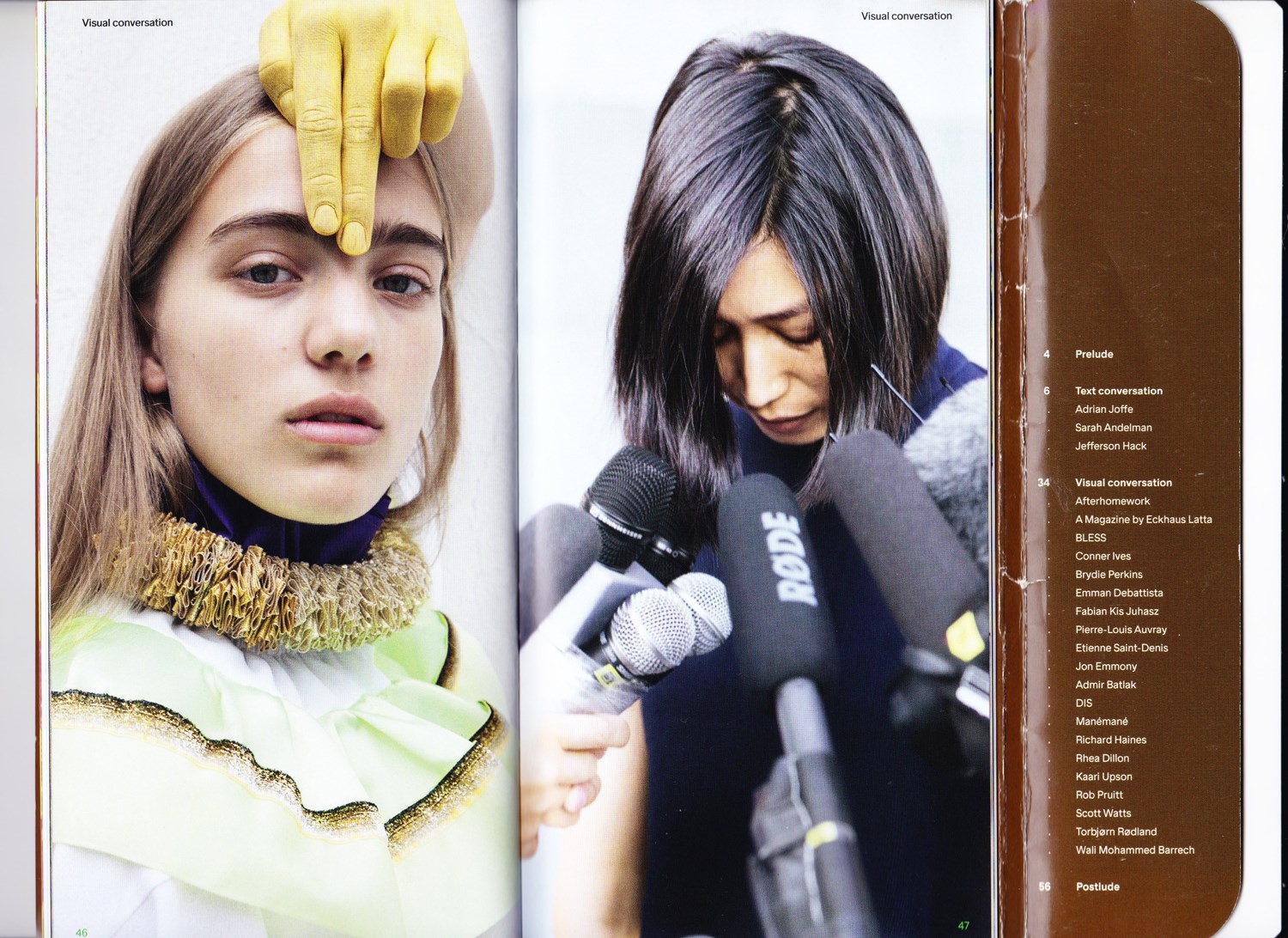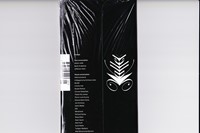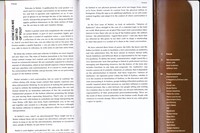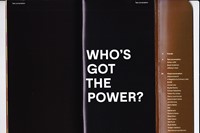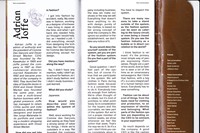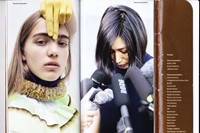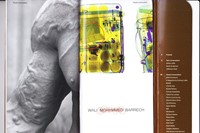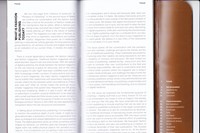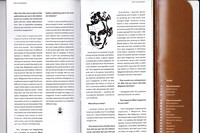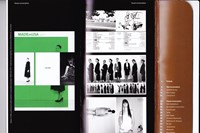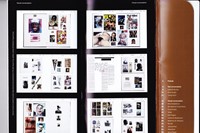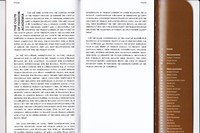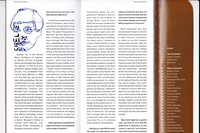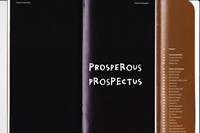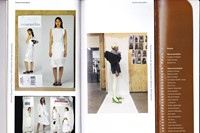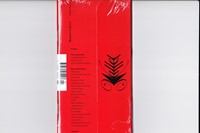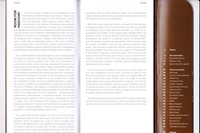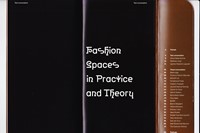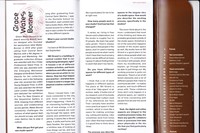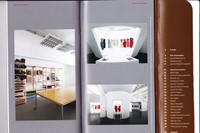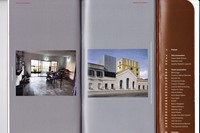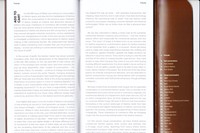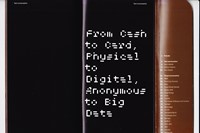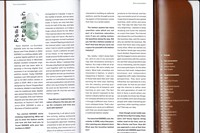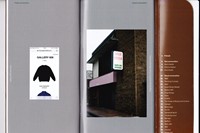This week, 19-year-old Norwegian editor and publisher Elise By Olsen (Recens Paper, Wallet) is the guest editor of AnOthermag.com, presenting a series of articles exploring the current and future state of fashion and art publishing. Alongside conversations with publishers, critics and image-makers, this guest edit offers an intimate insight into her own publications and working practice.
The Wallet venture started with a desire I had to redeem fashion journalism. I felt that it had been in a poor state for a long time and that it was still far from ideal. Visual content trumped editorial; in-depth stories were branded and based on commercial interest. After working in fashion media for five years with my previous publication Recens Paper, there were obviously a lot of things I disagreed with and was intimidated by.
At a time where we’re being exposed to such a large amount of information and images each day, I would argue that the written word and fashion criticism is of increasing importance. I wanted to create space for conversations that include and go beyond what we as consumers process as part of the fashion system; to introduce critical thinking and to ask questions, as a way of processing all of this information.
Magazines are a major part of fashion; they have intellectual, financial and educational power. I think Wallet has one foot in, one foot out of this larger conversation about fashion. Because I do believe in conversations – I see Wallet as a series of holistic discussions; each issue speaking with another. We invite the reader to actively partake in the conversation, while our internal process is based on having dynamic discussions around everything that we publish. I treat each issue of Wallet as its own separate publication, each with its own specific theme, though the frames and format we work within remain the same. I believe in continuity.
There has been a trend of doing all these big and weighty coffee table books and magazines, which are not convenient. Wallet, by comparison, is the size of an actual wallet. The size started as a conceptual spin-off on the name; we called the publication Wallet because of its premise in speaking to the financial side of the industry. The format aimed to compliment the concept of an actual wallet: for it to be easy to keep with you; portable, mobile and accessible; and for it to function as one of your essentials. We examined print publications and physical products, asking “Why don’t people buy print anymore? Why aren’t people buying newspapers, for example? What if you could have a physical publication in a mobile format that you can carry around with your essentials?” We wanted to adapt it to the accessibility of the iPhone, too, so you are actually able to carry Wallet with you. So the magazine is pocket-sized, suiting a standard jeans pocket (11 by 22 centimetres). In a way, Wallet is very anti-coffee table...
Another critical element in Wallet is our approach to ads. Every magazine needs advertising to run, and we do feature ads, but those in Wallet can be ripped out if you’d rather read the issue without them. They have a perforation down the side so they can be torn out cleanly, a sort of like an analogue version of AdBlock. You can tear out the ads and throw them away, or you can hang them up on your wall – whatever you like. Each Wallet also has note pages, which enables you to share, reference and write notes. I think both these features encourage our readers to actively interact with their Wallet.
During this process of publishing Wallet’s first five issues, I have devoted considerable time to getting the creative formula for a contemporary print publication just right. So, it’s with great pleasure that I will now break down each issue’s themes and structures in chronological order, as your extensive introduction to my critical operation in the fashion industry at large.
1. Admins of Authority
The first issue of Wallet, ‘Admins of Authority’, was a conversation on power in fashion and the people who exerts it. What powers are at play? This issue’s text conversation took interest in how those who are on top of the fashion pile regard their power. We selected three forms of power – the CEO, the buyer and the editor-in-chief – in order to facilitate a text conversation on authority, and who administers this, featuring Adrian Joffe (president of Comme des Garçons and Dover Street Market), Sarah Andelman (founder and creative director of Colette) and Jefferson Hack (CEO and co-founder of Dazed Media) as representatives for the respective positions. The issue’s visual conversation asked those that are affected by this power to use their craft to explore what such powers symbolise to them.
Featuring: Afterhomework, A Magazine by Eckhaus Latta, BLESS, Conner Ives, Brydie Perkins, Emman Debattista, Fabian Kis Juhasz, Pierre-Louis Auvray, Étienne Saint-Denis, Jon Emmony, Admir Batlak, DIS, Manémané, Richard Haines, Rhea Dillon, Kaari Upson, Rob Pruitt, Scott Watts, Torbjørn Rødland and Wali Mohammed Barrech.
2. Pioneers of Publishing
The second issue of Wallet, ‘Pioneers of Publishing’, was a conversation on the evolution of fashion press and the mechanisms within it. It asked: what is fashion publishing today? This issue’s text conversation took interest in the pioneers; those who maintain, challenge and ignore the frames and formats of traditional publishing. We invited pioneers of publishing, of micro-press and of publishing conglomerates, to an extended conversation which questioned where the magazine sits in today’s complex media landscape, in physical and digital media. The issue featured Isabella Burley (editor-in-chief of Dazed), Nick Knight (director of SHOWstudio) and Joerg Koch (editor-in-chief of 032c and SSENSE). For the issue’s visual conversation we examined the fundamental purpose of publishing: making stuff that is out there, forever (?). This led us to ask for contributions as facsimile – the traditional technique of reproducing books and prints as true to the original source as possible. We invited fashion workers we admire, who also use publishing as a medium, to contribute facsimiles of their own publications – including lookbooks, catalogues, magazines, and so on. All the facsimiles were gathered and curated into a 20-page visual essay.
Featuring: Kiko Kostadinov, Bernadette Corporation, Exactitudes, Telfar, Not Vogue, Vivienne Westwood, Matthew M. Williams, Re-bel, Jacquemus, Mowalola and Acne Paper.
3. Elite of Education
The third issue of Wallet, ‘Elite of Education’, was a conversation on fashion education and its changing operations. What is fashion education today and what should it be tomorrow? How is fashion studied, taught and theorised today? Who is responsible for educating the fashion workers of the future? This issue’s text conversation invited three educators to partake in a conversation about the cult and culture of fashion academia and the process of shaping the talents that will keep reconfiguring the fashion industry and the fashion system. Hussein Chalayan (professor of fashion at the University of Applied Arts Vienna) took part, along with Hywel Davies (fashion programme director at Central Saint Martins) and Shelley Fox (Donna Karan professor of fashion at Parsons School of Design). For this issue’s visual conversation we assembled a prospectus of pioneering talent in our 20-page editorial. We invited students and recent graduates from a wide array of global fashion schools to present their portfolios freely. This open invitation revealed something about the state of fashion education today by featuring the emerging players of the fashion industry of tomorrow.
Featuring: Amy Cookes, Annaliese Griffith Jones, Daniel Levi, Dorry Hsu, Eleanor McDonald, Elnaz Gargari, Florentina Leitner, Grace Kennard, Laura Newton, Limeng Ye, Misha Japanwala, Noora Ainasoja, Paula Cánovas del Vas, Quinten Mestdagh, Rui Zhou, Shir Naeh, Sinéad O'Dwyer, Stefan Cooke, Stina Randestad, Tuuli-Tytti Koivula, Venice Wanakornkul and Ville Polho.
4. Shamans of Space
The fourth issue of Wallet, ‘Shamans of Space’, was a conversation about the relationship between fashion and space, with a focus on examining the idea of space from the transition from studio to workshop and physical production, to spaces with potential for multiple forms of creation and participation. Where does fashion happen? This issue’s text conversation invited Grace Wales Bonner (creative director of Wales Bonner), Matthew Linde (curator) and Ippolito Laparelli (architect and partner of OMA/AMO) into an expanded conversation on the spaces they operate within. We questioned studio situations and the interactions within, runway installations as fashion’s traditional mode of presentation and the fashion museum-as-mausoleum. For this issue’s visual conversation we created a 20-page sprawling showcase contextualising fashion spaces, with a focus on the studio, the exhibition, and the runway.
Featuring: Balenciaga, Bjarne Melgaard, Boris Bidjan Saberi, Florence Fashion Biennale, Fondazione Prada, Hussein Chalayan, Issey Miyake, Musée Yves Saint Laurent, Rei Kawakubo/The Costume Institute and Yohji Yamamoto.
5. Champions of Commerce
The fifth issue of Wallet, ‘Champions of Commerce’, was a conversation about the marketplaces of fashion. How can clothing in a store behave today? And what’s the future of retail? This issue’s text conversation invited Rami Atallah (CEO of SSENSE), Vittorio Radice (director of La Rinascente) and Arun Gupta (CEO of Grailed) to join a conversation on the commercial fashion space. We questioned the enduring appeal and importance of physical space in a time of totalising digitality, the symbiotic relationship between commerce and creativity and how the digital user experience has shaped the way we shop. These champions of commerce offered an intriguing insight into the economies behind retail in the fashion industry. For this issue’s visual conversation we invited various commercial fashion spaces, both current and archival, into a 20-page visual essay. Spanning luxury brand stores, independent boutiques, high street chain stores, shopping malls, online Big Cartel stores and ‘alternative’ shops, we aimed to capture different modes of what a fashion retail experience is and can be.
Featuring: H&M, Stand Up Comedy, Retti, Dover Street Market, Gallery 909, Ooga Booga, Alara, Colette, The House of Beauty and Culture, Camper, Balenciaga, LN-CC, Darklands Berlin, The Broken Arm, Barneys, Goffa X, Slam Jam, SEX, Fiorucci, Atelier E.B.
